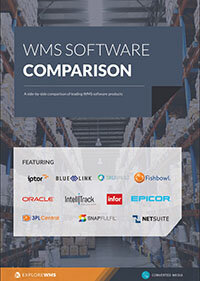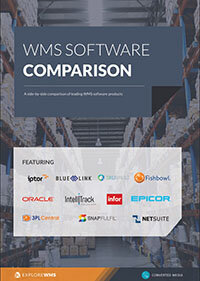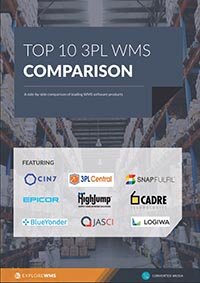What benefits can a 3PL WMS bring to your warehouse?
Many customers turn to a 3PL because they’re at an inflection point in their business. They’re growing too quickly for their warehouse and need you to handle that expansion. So, much of a 3PL’s business revolves around the ability to scale up and down as customers change. The faster and more quickly you can achieve this, the better your profit margins will tend to be per customer.
That’s where some of the beauty of a 3PL WMS comes into play. These tools are designed to handle sales, automate processes, and adapt to a variety of warehouse changes while your team focuses on the physical work in the warehouse.
Let’s look at four key ways a 3PL WMS makes your job easier, and your customers happier.
Advanced billing support
Your 3PL warehouse is essentially running multiple operations – one for each client – and that can lead to many reporting and billing challenges. Thankfully, a 3PL WMS simplifies your billing processes, so you treat each customer appropriately.
Leading solutions also help you minimize the time it takes to generate and send invoices, integrating with tools your customers use like QuickBooks, so you can get paid faster and reduce operational costs. Look for those that support billing scripts, and the process gets even quicker, with your team focused on verification instead of manual data entry.
Easier integrations for orders
Customers in a growth spurt like to spend a lot of that extra revenue, and more often we see it going toward technology. That means new ecommerce platforms, ERPs, CRMs, and many other systems that generate or manage orders.
Having a robust 3PL warehouse system ensures that you can integrate with these partner packages and channels, simplifying your ability to get and fill orders from your customers. Instead of building multiple portals and systems yourself, the WMS can gather customer data and generate picking orders for your team as you need it.
Fast changes, product and otherwise
Customers engaging with their first 3PL almost always are running a little behind. They are trying to catch up on orders, automate processes, or just streamline their overall operations. This usually means they lack or have forgotten something.
Sometimes it is as simple as adjusting the packaging to add the right or required labels. Other times, you might need to develop a whole new packaging plan. When a customer sees a competitor using a fancy box or packaging tape with their logo on it, they’ll come to you about doing the same. Every change is something you have to record and adhere to, no matter how often they happen.
A 3PL-specific WMS makes this simple by helping you flow orders appropriately. The workstation with the new packing filler gets all the orders, or product kits under a new SKU are incorporated and recorded appropriately.
Instead of significant training for your team whenever such an update occurs, you can do minimal walkthrough while having the 3PL WMS serve as a constant check.
Keeping each customer happy
As a 3PL, you know that your customers can be picky, and they all tend to have a variety of their own specific needs and requirements. Packing and shipping procedures, kiting, and tracking, among many other things, can differ significantly between your customers.
3PL software solutions like a WMS should make it easier for you to keep track of these differences and ensure they’re followed. Your 3PL WMS can automatically adjust so that every order meets a client’s specifications, every time.
That’s the ultimate goal and one of the big reasons that you should consider getting a 3PL-specific WMS.
Free white paper

WMS comparison guide
Your hand-picked comparison of leading WMS software vendors.

Featured white papers
Related articles
-

What are the biggest WMS challenges in warehouse management?
The top problems warehouses face and how WMS helps them
-

Mission-critical features of food lot traceability software
What features of food traceability software will help you during a food recall
-

The benefits of a warehouse inventory system
The benefits WMS provides inventory management in the warehouse


